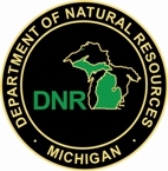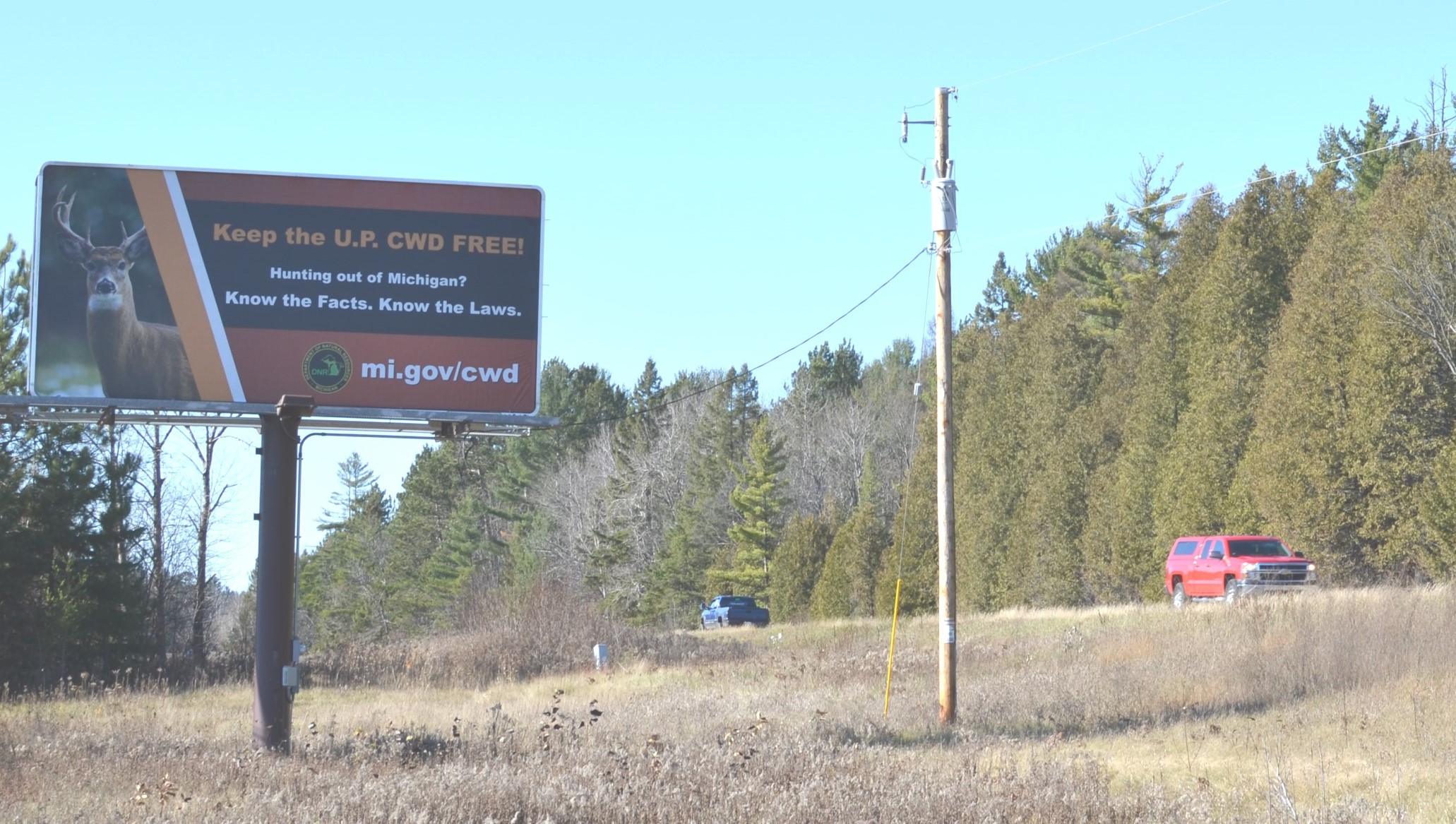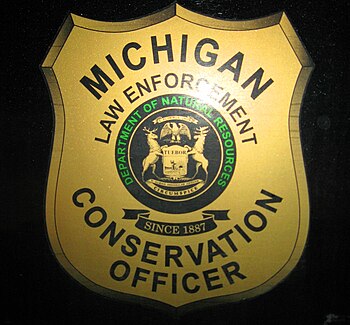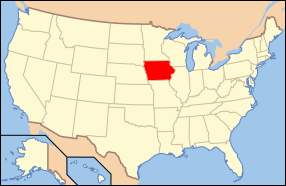MADISON - Wisconsin has a long and storied tradition of regulated gun deer hunting stretching all the way back to 1851. There have been many changes over the years, but few as dramatic as those experienced by hunters during the late 1990s and early 21st century.
1834 - Lafayette County, first reported crop damage by deer.
1851 - First closed season for deer, Feb. 1 - June 30; Indians permitted to hunt anytime.
1876 - Hunting with dogs prohibited statewide.
1887 - Two game wardens appointed by governor at a monthly salary of $50; night hunting prohibited statewide.
1888 - Game laws published in pamphlet form.
1890 - First chief warden appointed.
1892 - Lawful to kill any dog running or hunting deer.
1895 - Sheboygan first county closed to deer hunting; deer cannot be transported unless accompanied by hunter; last October deer season in state.
1897 - First bag limit for deer, two per season; resident license costs $1, nonresident license costs $30; estimated license sales total 12,000.
1900 - Twelve hunters killed by firearms.
1903 - Estimated 78,164 licenses sold.
1905 - Salt licks prohibited.
1909 - Season 20 days long, limit one deer; first civil service exam given on a competitive basis for prospective wardens.
1910 - Deer populations drop to record low numbers due to unregulated hunting and market shooting.
1914 - Twenty-four hunters killed, 26 injured; license sales at 155,000
1915 - First buck only season.
1917 - Shining deer illegal while possessing a firearm; Conservation Commission delegated some powers related to deer season, but legislature retains authority to set seasons; deer tags (paper) required for the first time...they cost 10 cents.
1919 - Estimated kill is 25,152.
1920 - First use of metal deer tags...they cost 10 cents.
1921 - Wardens are instructed that "all deer found in possession...with horns less than three inches in length, is a fawn and should be confiscated."
1924 - Estimated kill is 7,000.
1925 - Legislature passes law closing deer season in alternate years.
1927 - No open season.
1928 - Deer hunters required to wear official conservation button while hunting; Game Division formed with Conservation Department; estimated kill is 17,000 with 69,049 deer tags sold.
1929 - No open season.
1930 - Estimated kill is 23,000 with 70,284 deer tags sold.
1931 - No open season.
1932 - Deer tag price is raised to $1; estimated kill is 36,009 with 70,245 deer tags sold.
1933 - No open season; Conservation Congress, an advisory group representing public opinion registered at annual county hearings, begins to assist the Conservation Commission in establishing a deer management policy.
1934 - First bow deer season; estimated gun kill is 21,251 with 83,939 deer tags sold.
1935 - No open season.
1937 - Shortest deer season on record, three days.
1938 - Use of .22 rifle and .410 shotgun prohibited.
1939 - Licensed children between ages 12 and 16 must be accompanied by parent or guardian; buckshot prohibited statewide.
1941 - Deer predators rare, timber wolves nearing extinction; estimated gun kill is 40,403 with 124,305 deer tags sold.
1942 - Back tags required while deer hunting.
1943 - First doe and fawn season in 24 years. The 1943 season was unique in Wisconsin, with a "split season" with forked (>1" fork) bucks-only for 4 days followed by a 3-day closure and then 4 days of antlerless-only (128,000 harvest).
1945 - First year of 'shotgun only' counties; wearing red clothing required while hunting deer.
1949 - The 1949 season was an unusual any-deer hunt - bucks with more than a two-inch fork were protected (159,000 harvest).
1950 - First 'any deer' season since 1919; estimated gun kill is 167,911 with 312,570 deer tags sold.
1951 - Deer hunting license and tag cost $2.50; orange clothing now included under red clothing law; Wisconsin leads nation in whitetail deer kill for third consecutive year.
1953 - First season gun deer hunters required to register deer at checking station.
1954 - Two-thirds of bucks harvested are less than three years old; portions of Walworth and Waukesha Counties and all of Jefferson County open for the first time since 1906.
1956 - 100th established gun deer season; registered gun kill is 35,562 with 294,645 deer tags sold.
1957 - Legislature authorizes party permit.
1958 - Longest deer season since 1916, 16 days; Rock County open for the first time since 1906; first harvest by deer management unit (in northwest and northeast only); registered gun kill is 95,234, of which 44,987 taken by party permit; 335,866 deer tags and 58,348 party permits sold, respectively.
1959 - First statewide deer registration by unit; Game Management Division of Conservation Department assumes responsibility for coordinating the state's deer program; first open season in Kenosha County since 1906.
1960 - Hunter not permitted to buy a license after opening day of gun season; Green and Racine Counties open for the first time since 1906; all counties now open except Milwaukee; registered gun kill is 61,005, of which 25,515 taken by party permit; 338,208 deer tags and 47,522 party permits sold, respectively.
1961 - Resident big game license increased from $4 to $5; first use of SAK - sex-age-kill population-reconstruction technique for estimating deer numbers; hunters required to transport deer openly while driving to registration station; legislation authorizing unit specific quotas for antlerless harvest established.
1962 - Deer population above 400,000; deer management unit specific population goals established.
1963 - First year of quota party permits in eight management units; assassination of President Kennedy lessens hunting pressure.
1964 - Party permit quota extended to 32 management units.
1967 - Hunter Safety Education Program begins.
1970 - Registered gun kill is 72,844 with 501,799 licenses sold; 13 hunters killed.
1973 - No deer season fatalities.
1978 - Record registered gun kill is 150,845 with 644,594 licenses sold.
1980 - Blaze orange clothing required; first season of Hunter's Choice permit; new law prohibits shining wild animals from 10pm to 7pm, Sept. 15 - Dec. 31; coyote season closed in northern management units to protect nascent wolf population.
1981 - Record registered deer kill of 166,673 with 629,034 licenses sold.
1982 - Another record registered gun kill of 182,715 with 637,320 licenses sold; three deer season fatalities.
1983 - Harvest continues to rise with another record registered gun kill of 197,600 with 649,972 licenses sold; experimental antlerless deer shunt in six southern management units to relieve crop damage.
1984 - Big jump in registered kill, fourth record harvest in a row of 255,726 with license sales totaling 657,969; handgun deer hunting allowed in shotgun areas; group hunting legalized.
1985 - Fifth consecutive record kill of 274,302 with 670,329 licenses sold; deer season extended in 21 management units; legislature further strengthens road hunting restrictions.
1986 - Gun deer season now nine days statewide; landowner preference program begins for Hunter's Choice permits.
1987 - First year of bonus antlerless permits; seven fatalities and 46 injuries.
1988 - Handguns permitted statewide.
1989 - Record registered gun harvest of 310,192 with 662,280 licenses sold; pre-hunt herd estimate of 1.15 million deer; two fatalities and 37 firearm injuries.
1990 - License sales peak at 699,275. Another record gun kill of 350,040, including 209,005 antlerless deer; archers take 49,291 deer; pre-hunt herd estimate of 1.3 million; season extended for seven days in 67 management units.
1991 - First year of separate, seven-day muzzleloader season; third consecutive year of record gun harvest, 352,330; archery harvest jumps to 69,097; hunters allowed to buy more than one antlerless permit.
1992 - Natural Resources Board approves DNR secretary's recommendation to keep the gun season at nine days; new metro management units established around La Crosse, Madison and Milwaukee. After three record-breaking harvests, gun harvest drops to 288,820, still the fourth highest on record.
1993 - Pre-hunt herd population at 1 million with many units below prescribed goals; 34 units, mainly in the north, designated as buck-only units; license sales dip to 652,491; gun harvest at 217,584; archers take 53,008 deer; one fatality, 17 firearm injuries.
1994 - Gun harvest back up, by more than 90,000, to 307,629. Hunters Choice permit widely available; six northwest management units remain buck only; herd beginning to build up in southern agricultural range.
1995 - For the first time hunters can use their bonus or Hunter's Choice permits in either the gun, bow or muzzleloader seasons; gun harvest totals 398,002, a new state record; archers kill a record 69,269 deer; 32 firearm incidents, one fatality.
1996 - First October gun deer hunt since 1897; "Earn-a-Buck" rules, requiring hunters to harvest a doe before taking a buck, established in 19 deer management units in agricultural range; special four-day, antlerless-only season in October in all 19 of these DMUs. October gun harvest is 24,954 deer.
1997 - The safest gun season ever with one fatality and 10 injuries; 'Earn a Buck' provision scuttled; early Zone T (October gun) season in seven management units and three state parks.
1998 -Gun harvest of 332,254 is fifth highest; bow hunters take a record 75,301 deer, 18.5 percent of total; 19 firearm incidents with two fatalities; after a mild winter, most DMUs estimated to be above population goals; early October season held in one management unit, 67A.
1999 - Record gun harvest of 402,204 deer; record archery harvest at 92,203; licensed hunters at 690,194, second highest to date; resident deer license costs $20; non-resident license $135; early archery season, traditionally closed a week before November gun hunt, is extended in all 7 Zone T units through the Thursday preceding the traditional gun opener.
2000 - The gun harvest jumps by more than 125,000 deer to an all-time record of 528,494. With 694,712 licensed gun hunters, their success rate is an astonishing 76 percent. By comparison, in the 43 years from 1966 to 2009, the average success rate for gun hunters is 37 percent.
2001 - Routine testing by DNR, weeks after the close of hunting, reveals that three deer harvested in the Town of Vermont in Dane County had CWD, or chronic wasting disease. The gun harvest drops to 361,264, still the fifth highest on record and higher than any harvest prior to 1995. Archery harvest remains high at 83,120, so the total harvest is fourth highest on record. October and December Zone T gun hunts in 67 DMUs.
2002 - The DNR and hunters begin looking for answers after CWD is found for the first time in wild deer east of the Mississippi River. For two decades, the always fatal, contagious disease had been largely confined, in the wild, to deer and elk in Colorado and Wyoming. DNR reacts aggressively, setting up a CWD management zone, with expanded hunting, and a smaller disease eradication zone, with a 14-week gun hunt. DNR samples 41,000 deer statewide for CWD. License sales drop 10 percent.
2003 - Bow hunters harvest a record 95,607 deer. Gun deer license sales up 14 percent over 2002, climbing to 644,818. Earn-a-buck rules in effect and no bag limit in the CWD management zone in southwest Wisconsin; 115 wild deer test positive for CWD with all but two positives from the disease eradication zone.
2004 - Hunters set a new record with venison donations by giving 10,938 deer yielding nearly 500,000 pounds of venison for food pantries across the state. Widespread use of earn-a-buck and Zone T hunts. Bow hunters set yet another record, harvesting 103,572 deer. License sales up slightly to 649,955.
2005 - Top five gun deer harvest counties - all located in central Wisconsin - are Marathon (15,871), Clark (13,918), Waupaca (12,260), Shawano (11,748) and Jackson (11,461). DNR tests 4,500 deer in the agency's northeast region and CWD not detected.
2006 - Gun deer license sales at 644,906. Demographics show a gradually declining number of hunters nationwide due to a variety of changing social conditions. DNR, wildlife organizations and hunting clubs across state are ramping up efforts to encourage young hunters. NRB has approved a special, 2-day youth hunt in early October. Total gun harvest is 393,306, fifth highest on record.
2007 - Wisconsin's 156th deer season; archery harvest peaks at 116,010 deer; gun hunt now lasts 23 days in the CWD Zones; 57 of Wisconsin's 130 DMU's have earn-a-buck rules.
2008 - Most of southern Wisconsin now lies within the new CWD-management zone; focus has shifted to managing rather than eliminating the disease; rifles can be used to hunt deer in previously shotgun-only areas of the CWD zone; more than 642,000 licensed hunters kill 352,601 deer during all gun seasons.
2009 - The new "Mentored Hunting Program" is introduced, allowing any licensed hunter aged 18 or older to take any new hunter age 10 or older on a hunt. The mentor does not carry a weapon and stays within arm's reach of the novice. Nine-day gun hunt opens with unseasonably warm temperatures and heavy fog throughout much of the state. Gun harvest drops to 241,862.
2010 - Hunters may now divide a deer into up to five parts (four quarters plus the head attached to the spinal column and rib cage) to facilitate removal from the field.
Hunting regulations are available on DNR's web site; 18 DMUs in the north have buck-only hunting during both gun and bow seasons to allow herd to grow in the north. No earn-a-buck units except in CWD zone.
2011-Archery season is permanently extended to run through the gun deer season. Hunters report higher deer numbers in north. There are no October herd control hunts outside the CWD Management Zone. . Earn-a-buck rules are completely eliminated by legislation statewide and hunters in the CWD Management Zone may shoot a buck first. Earn a Buck is replaced with "bonus buck". CWD detected in a doe harvested outside of Shell Lake in Washburn County, prompting sampling and public outreach. State hires independent deer trustee to review Wisconsin deer management. DNR embarks on multi-million, multi-year study to quantify various causes of deer death (whether by hunter, disease, weather, vehicle collision or predation by wolf, bear or coyote). More than 400 hunters volunteer help make the first year of field research a success.
2012 - For the first time since 1995, there are no October herd-control gun hunts anywhere in the state. CWD zone hunters can take additional bucks under "bonus buck" rules. Anyone may now hunt with a crossbow during any gun deer season. Hunter participation in deer field research remains strong; $5 introductory licenses for various game species are introduced to help recruit new hunters and encourage past hunters to return. Bowhunters set an all-time record harvest of bucks.
2013 - Rifles allowed for hunting statewide after research shows they pose no greater risk than shotguns even in more populated counties. Hunting allowed in most state parks for the first time for about a month in the spring and a month in the fall, with archery hunting in parks running longer. Citizen "action teams" working on the Deer Trustee Report complete their recommendations, the DNR prepares proposed changes to deer management and 35 public hearings are held statewide. One proposal: reduce the number of deer management units, either by combining units or managing deer by county. CWD surveillance expanded in Adams, Juneau and Portage counties after four deer test positive outside the CWD management zone in southern Wisconsin.
2014 -A crossbow season for deer is established for the first time, and the sale of crossbow licenses is robust. The crossbow season runs concurrently with the archery season, from mid-September through the first weekend in January. Crossbow permits are no longer limited to handicapped hunters or those aged 65 or older. Deer management units now coincide with county lines and fall under "farmland" or "forest" zones. After a second consecutive severe winter, antlerless permits are eliminated in 19 forest zone counties. As a precursor to a major change scheduled for 2015, a pilot program for electronic deer registration is established.
2015 - This year marks the first year of statewide electronic registration for recording harvested deer. Electronic registration allows hunter to use a telephone or a computer with internet access to record their deer harvest, as well as, honoring past traditions to register in-person at a number of stations statewide. County Deer Advisory Councils and citizen involvement through programs like the Deer Management Assistance Program continue to play a key role in decision making and resource and habitat management as we enter a new era of deer hunting in Wisconsin.








 The DNR check station at Escanaba was the busiest in the U.P., followed by Marquette. Escanaba staff checked a total of 321 deer and there were 165 deer checked at Marquette.
The DNR check station at Escanaba was the busiest in the U.P., followed by Marquette. Escanaba staff checked a total of 321 deer and there were 165 deer checked at Marquette. manage the species, including lethal control, as outlined in the state’s Wolf Management Plan. The federal court ruling prohibits the Michigan Natural Resources Commission from considering hunting as a management tool.
manage the species, including lethal control, as outlined in the state’s Wolf Management Plan. The federal court ruling prohibits the Michigan Natural Resources Commission from considering hunting as a management tool. U.P. since
U.P. since 




